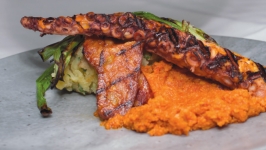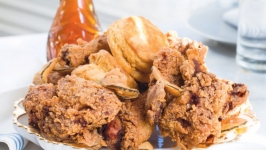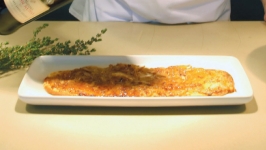A Passion For Salumi
A Modern Chef, Old World Techniques
An unassuming white refrigerator, hidden in the corner of a basement office in Wayne, is the secret to success for Robbie Felice, one of New Jersey’s rising-star chefs. Time spent in Manhattan and Las Vegas helped Felice carve out a passion for salumi, which he’s made the focus of Viaggio Ristorante—a rustic Italian restaurant tucked in a modest North Jersey strip mall. Inside that basement refrigerator, rows of Felice’s hand-crafted cured meats sit, aging.
“If you have an Italian restaurant, you have to be doing your own salumi,” says Felice.
A Sussex native, Felice, 27, grew up around his family’s home cooking. His father has been in the restaurant business for years, and Felice has been in and out of restaurants since he could walk. His upbringing pushed him toward a culinary career, and he enrolled at the Culinary Institute of America. While attending the CIA, he interned at Babbo, the renowned Italian restaurant in Manhattan’s Greenwich Village. Later, wanting to continue working for B&B Hospitality Group, he moved to Vegas and was hired at B&B Ristorante, where he worked his way up to sous chef. There, he developed a passion—an addiction, as he calls it—for salumi. By the time he left B&B Ristorante, he was running the restaurant’s salumi program.
“I was actually on [job] interviews in California, and my dad called me and said, ‘Rest up.’ I looked over to one of my friends and was like, ‘Oh, that means he bought a restaurant.’”
The restaurant needed a complete redesign. Felice and his father ripped out the kitchen, deciding to keep it partly open. They put archways and exposed brick in the dining area, just like Felice had seen in Italy. He remembered one particular dining experience, eating outside with hanging lights, and brought that to Viaggio’s interior.
“We kind of came up with this Tuscan farmhouse setting,” Felice says. “It was like stealing all the ideas of all my travels.”
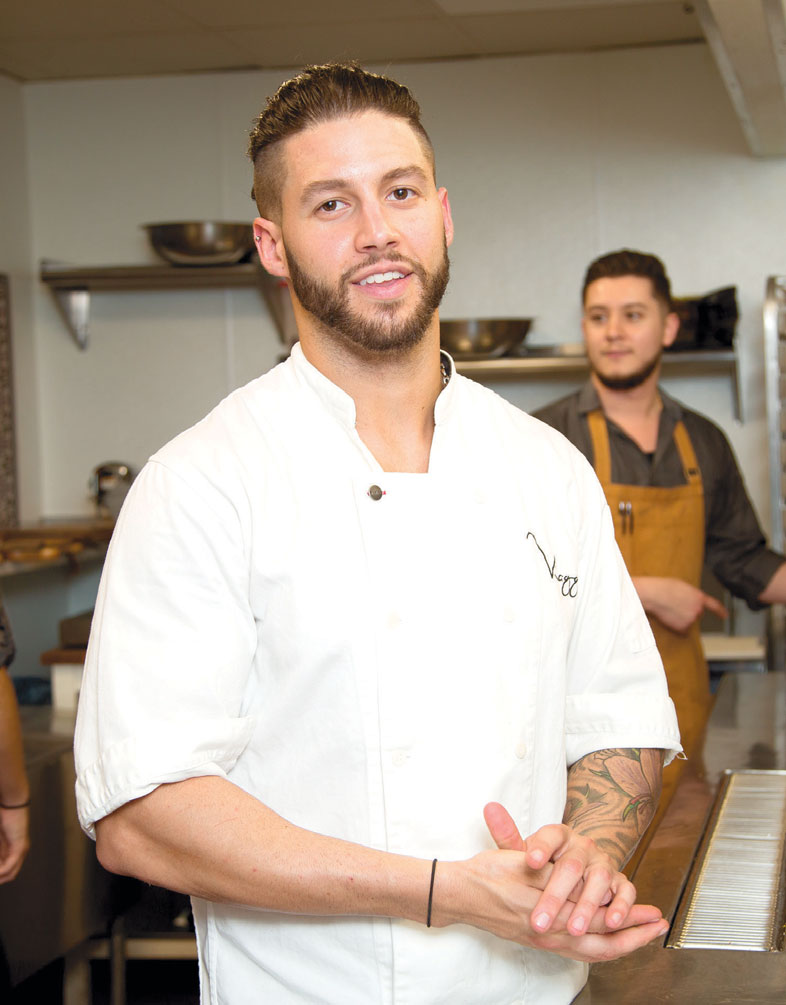
“We baby it and watch over it. It’s like taking care of a kid. We make sure it’s growing the right mold . . . and not rotting. And it should never smell bad.”
—Chef Robbie Felice
The restaurant’s table centerpieces are pickled vegetables, bricks are missing from the walls, and archways creatively break up an otherwise wide-open space. One thing Felice learned during his travels is that even the smallest detail plays a substantial role. The wall nearest to the archways is made of recycled barn wood from upstate New York, and Felice brought in metal chairs to add an industrial element to the wooden tables and exposed brick. To him, Viaggio is about recreating bits and pieces of where he dined in Italy, and to his father, the Wayne location was a deal too good to pass up. Viaggio opened its doors in 2016.
Felice’s interest in salumi was initially sparked at Babbo, where he found himself paying attention to the cured meats, which were made in-house.
“I wasn’t fully hands on, but I definitely took notes and learned about it,” he says.
When he first saw the entire salumi process, he was dumbfounded. “That’s what it is to be a chef. To make everything from start to finish, not buy this or that and put it all together.”
Felice was eager to learn the process. In Las Vegas, he helped to make the salumi for four of the group’s restaurants. “We had a giant walk-in closet where we would [make the salumi], and that’s where I learned it all.”
“Once I learned a lot about it, I was able to take it and do my own thing with it,” Felice says. “To bring it to a smaller restaurant like this and do it on a smaller scale isn’t too hard.”
Here in New Jersey, he’s begun experimenting, incorporating Old World concepts. “In this industry, you never master anything. You’re just always getting better at it.”
There are two different types of salumi: whole muscle and ground. Viaggio focuses mostly on whole muscle salumi. Whole muscles include meats like bresaola, coppa, guanciale and prosciutto, although they are not called as such until the curing process is complete. The whole muscles are cut and then cured with a salt mixture for a certain amount of time that is determined by the size and weight of the meat.
“We baby it and watch over it. It’s like taking care of a kid,” Felice says. “We make sure it’s growing the right mold . . . and not rotting. And it should never smell bad.”
Felice and his team wash the whole muscles in wine and re-salt them every week. The amount of salt differs depending on the muscles’ size. The meat is cured with salt for a few weeks; it’s usually for a minimum of 21 days, but a smaller muscle might be on salt for only 19 or 20 days. A decent size piece might take 28 days.
When the muscle comes off of the salt, it’s stuffed into a bung, or a casing made from the rear end of a cow, and aged until it is dry enough to eat. Felice cases his meats in a beef bung, although synthetic casings are also available.
“It’s about finding what works best for that type of meat,” he says.
The length of aging time varies; some meats might take only six months to age, but Viaggio’s house prosciutto—from start to finish—can take more than a year. Felice says his personal favorites are usually the larger cuts, such as prosciutto and culatello; they take more time to age and have a bigger flavor. Culatello is rare at Viaggio—and in the United States; it’s been dubbed “the king of salumi” and is one of the most expensive types available. When the restaurant does have it, it goes fast.
Felice’s basement refrigerator adds character to the aging process. It’s a white, standard-size refrigerator—the kind that could easily be purchased at any appliance store. The restaurant recently added a new refrigeration system, which is larger and of higher quality, to allow Felice to start the refrigeration process in a colder refrigerator and finish it in the smaller, warmer one. The drying-out process moves more quickly at a warmer temperature.
“It’s cool when people who are big foodies come down [to the basement] to see it, and they’re like, ‘Wow, everything comes out of here?’” he says.
Felice rotates the salumi menu depending on what’s available, but he usually has several staples: coppa, bresaola, lonza and duck prosciutto. Prosciutto di San Daniele, made from the hind leg of a pig, is imported when the restaurant doesn’t have its own on hand. Whether the meat is seasoned depends on the type. Felice does not season his bresaola; its natural flavors are enough. For the coppa, he adds fennel pollen and imported Calabrian chiles to complement the flavors of the meat. The meats are rubbed down with the seasonings before they are put into the bung.
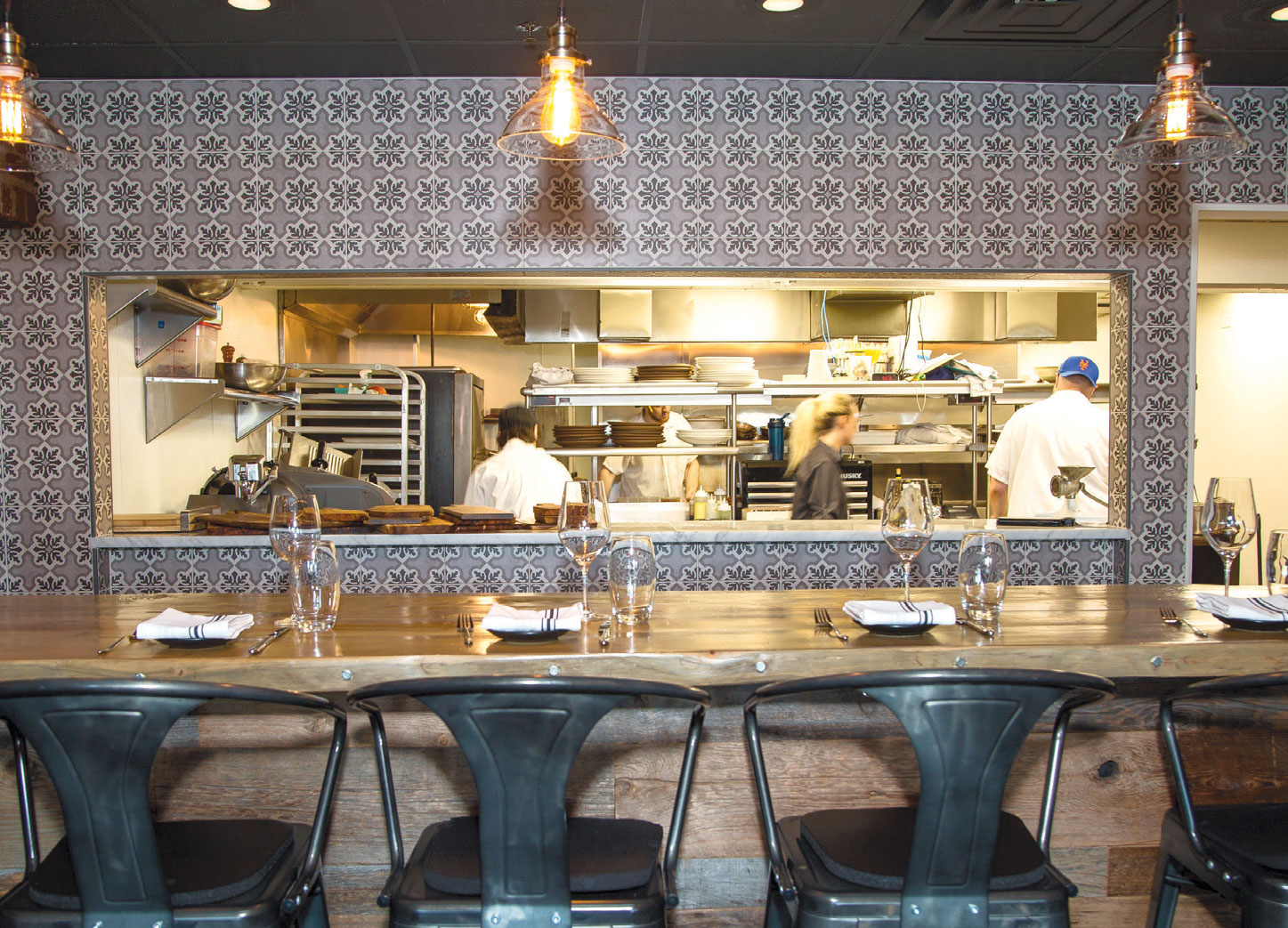
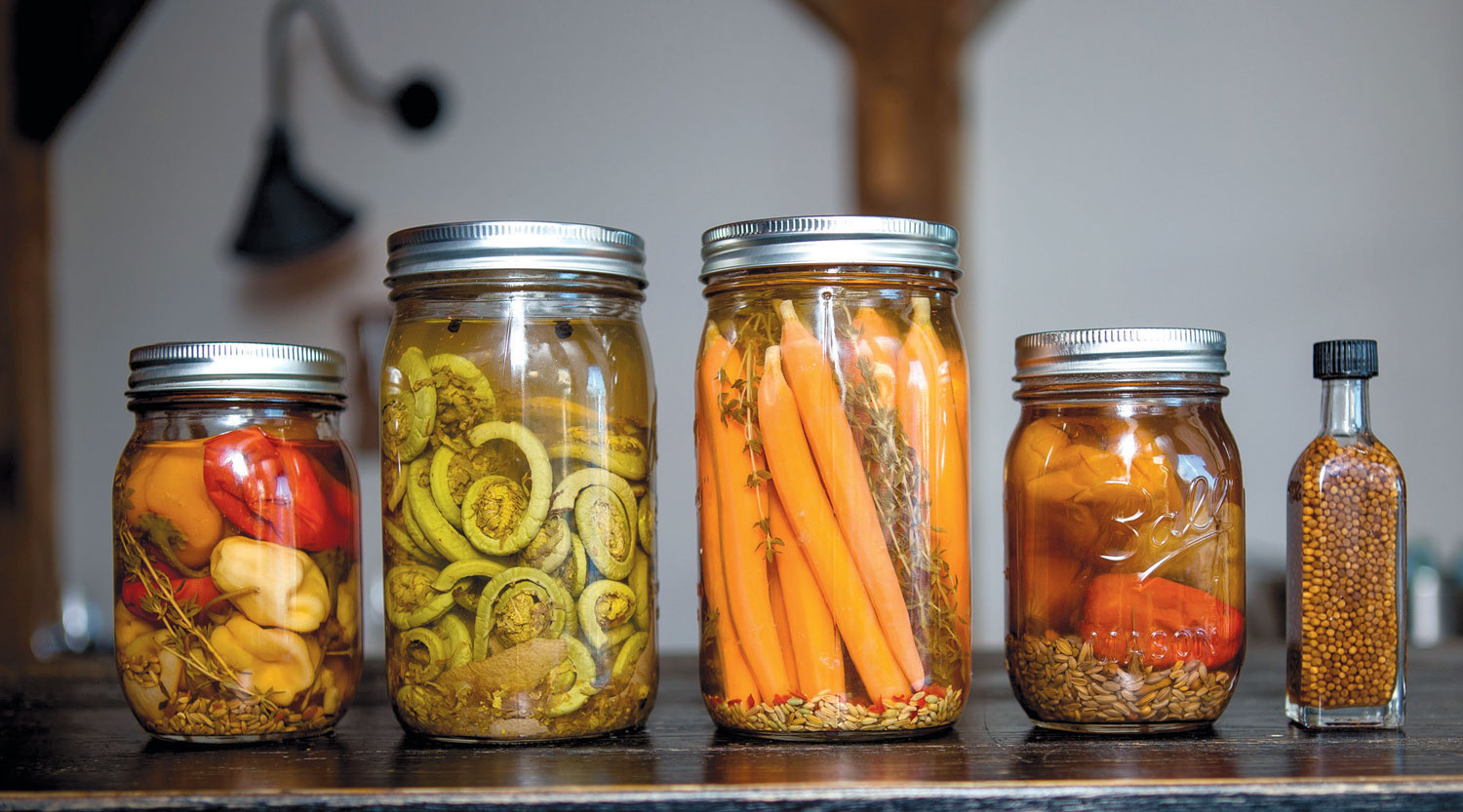
Pickled vegetables at Viaggio, including peppers, fiddlehead ferns, carrots with thyme, peppers with peppercorns and fennel seeds and mustard seeds.
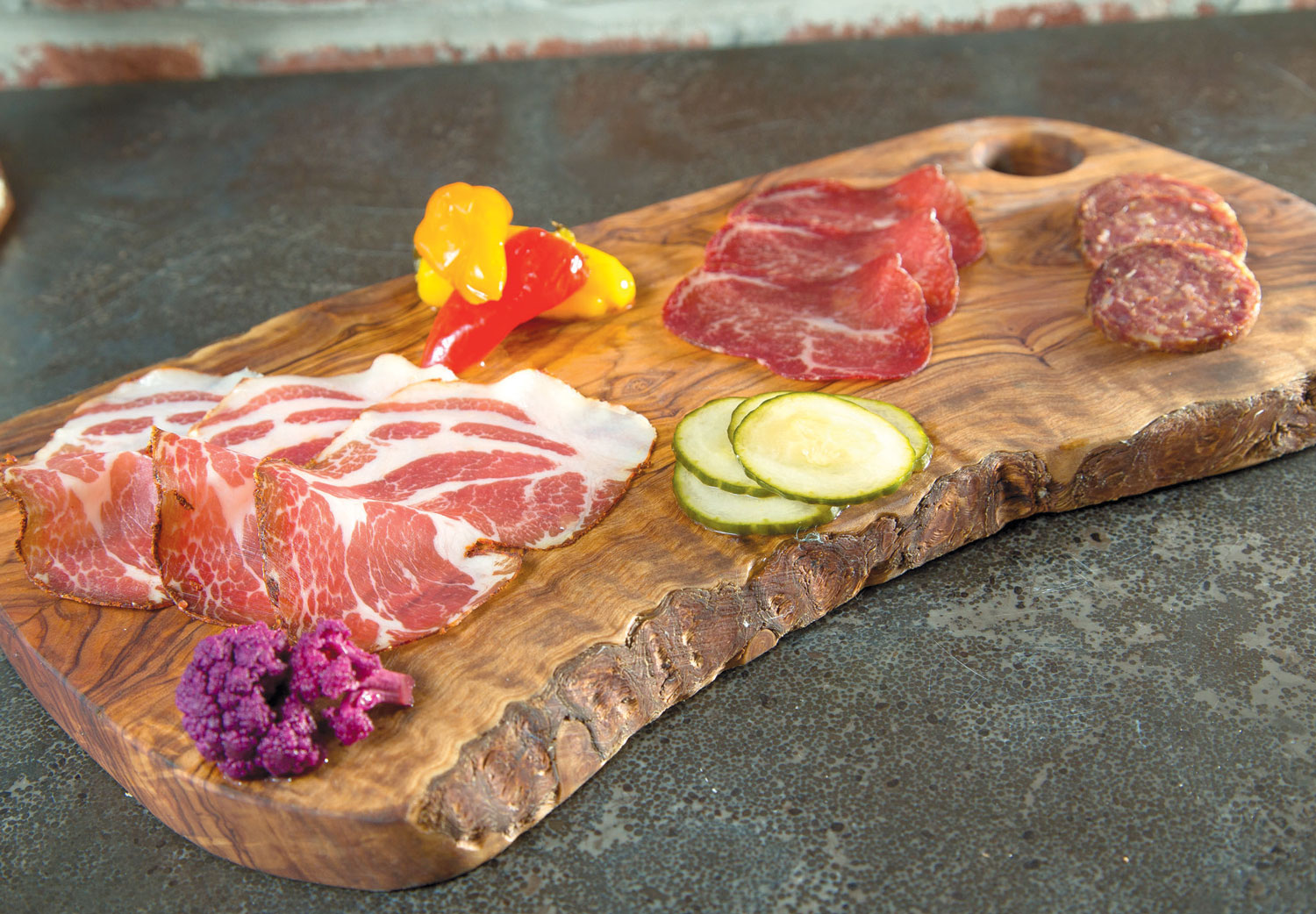
Felice sources locally throughout New Jersey and the surrounding states so he knows exactly what he’s serving to customers.
“You’re getting in a whole animal locally,” Felice says. “You know exactly where it’s coming from, what it’s eating. It was living just a few days before I got it.”
In order for the salumi to be consumed, it has to have lost a certain amount of water while it was drying. Felice tests the water activity to make sure it is on track and safe to eat. His salumi program is not done under the table. He works closely with the health department to ensure the process is done safely and everything is up to code.
The reward is great, but so is the risk. Trying something new means waiting several months for a potentially bad batch. There have been times when he has tested something out and never served it again. Plus, waiting six months or more for a finished product just to realize something went wrong means creating a whole new sample—and waiting another half a year to test it.
“I once had a large batch of Calabrese I made, and threw out the whole thing,” Felice says. “It dried wrong, its color was off, and it didn’t taste the way I wanted it to. It just wasn’t good enough.”
Felice is always reevaluating his meats and trying new things. His artisanal salumi has become a staple at Viaggio, and it’s highlighted in the center of the menu. Customers may order as many types of meat as they want, or choose to sample a chef ’s selection.
“A lot of work goes into it, and to have that satisfaction when it’s done is addicting,” he says. “A part of me loves it because not a lot of people do. And another part of me loves it because it’s challenging.”
To Felice, waiting for months—and sometimes more than a year—to see the final result is what keeps him interested. “To finally be able to cut into it and see and taste how it comes out is just something special,” he says. “I love the challenge and the reward in it.”
Felice plans to open a second North Jersey restaurant. From there, who knows?
“If I follow my career, I’ll end up in New York City. If I follow my heart, I’ll be somewhere on the beach where I can ride a pedal bike to work.”
VIAGGIO RISTORANTE
1055 Hamburg Turnpike, Wayne
973.706.7277
viaggioristorante.com
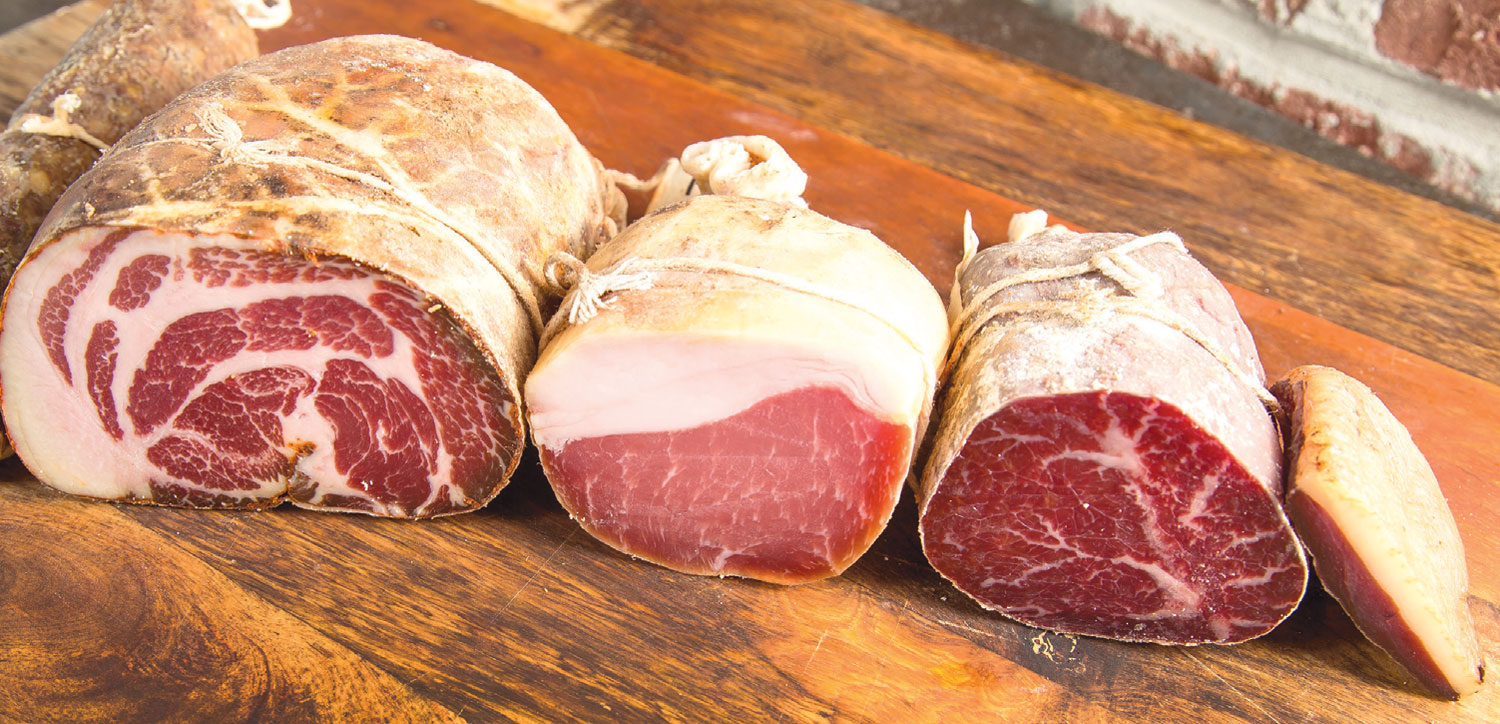
VIAGGIO’S SALUMI
In order from left:
- COPPA Made from the muscle starting at the neck of the pig. It’s sliced extremely thin and best served with pickles or on a sandwich.
- VIAGGIO’S SALUMI LONZA This lean cured pork loin is usually simply seasoned with black pepper or fennel and served with cheese or bread.
- BRESAOLA One of the few cuts of salumi that is made from beef. It typically ages for a few months to give it a tough, lean texture.
- DUCK PROSCIUTTO While prosciutto is usually made from the hind leg of a pig, Viaggio often has prosciutto made with duck meat. The meat is cured and aged for several months






